Knitting Behavior
KNITTING BEHAVIOR:
A MATERIAL-CENTRIC DESIGN PROCESS
Carrie Lee McKnelly
Submitted to the Department of Architecture
in partial fulfillment of the requirements for the degree of Master of Science in Architecture Studies
at the MASSACHUSETTS INSTITUTE OF TECHNOLOGY
June 2015

This thesis by Carrie Lee McKnelly, explores computation as a communicative device between the physical and the digital, establishing a conversation between a material assembly and a digital model as a tool to inform the logic of the assembly’s internal organization.
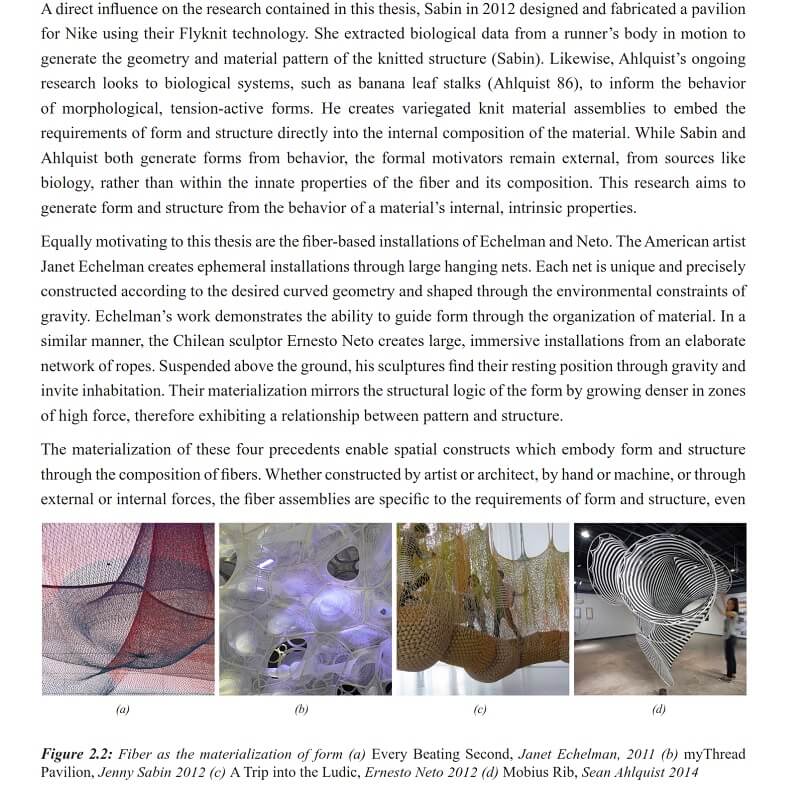 In this research, the material assembly, which is defined as a material whose properties derive from the programming of raw matter to form unique internal structures, manifests through the technique of knitting, a material practice defined by pattern as rule-based code.
In this research, the material assembly, which is defined as a material whose properties derive from the programming of raw matter to form unique internal structures, manifests through the technique of knitting, a material practice defined by pattern as rule-based code.
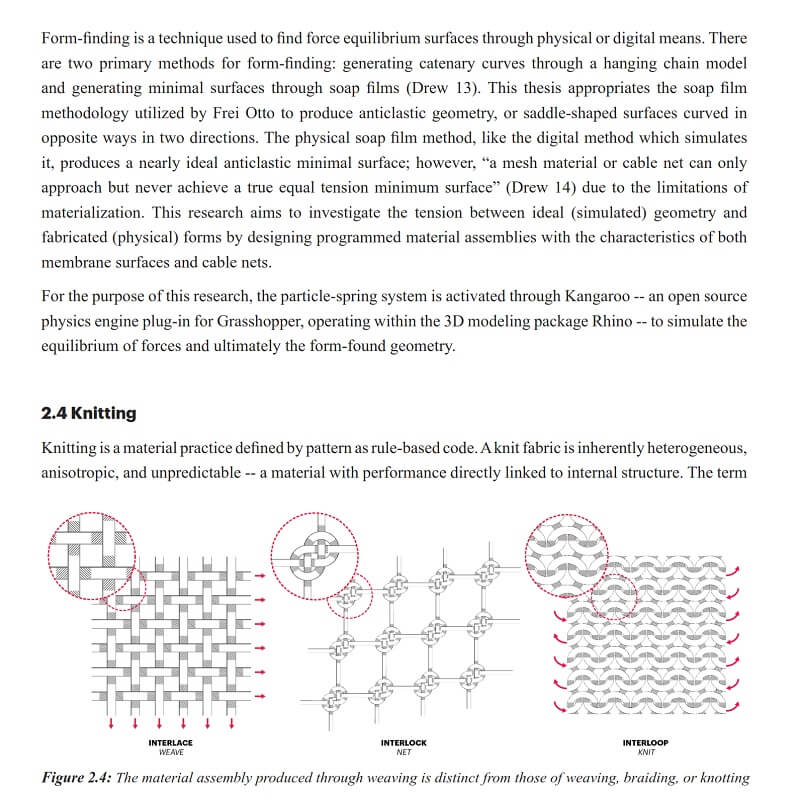 A key contribution of this research is the development of a framework to help designers better understand how the topology of a knit structure can align with formal and structural motivations of tension activated architectural forms. This was accomplished through the identification of the knit pattern as code.
A key contribution of this research is the development of a framework to help designers better understand how the topology of a knit structure can align with formal and structural motivations of tension activated architectural forms. This was accomplished through the identification of the knit pattern as code.
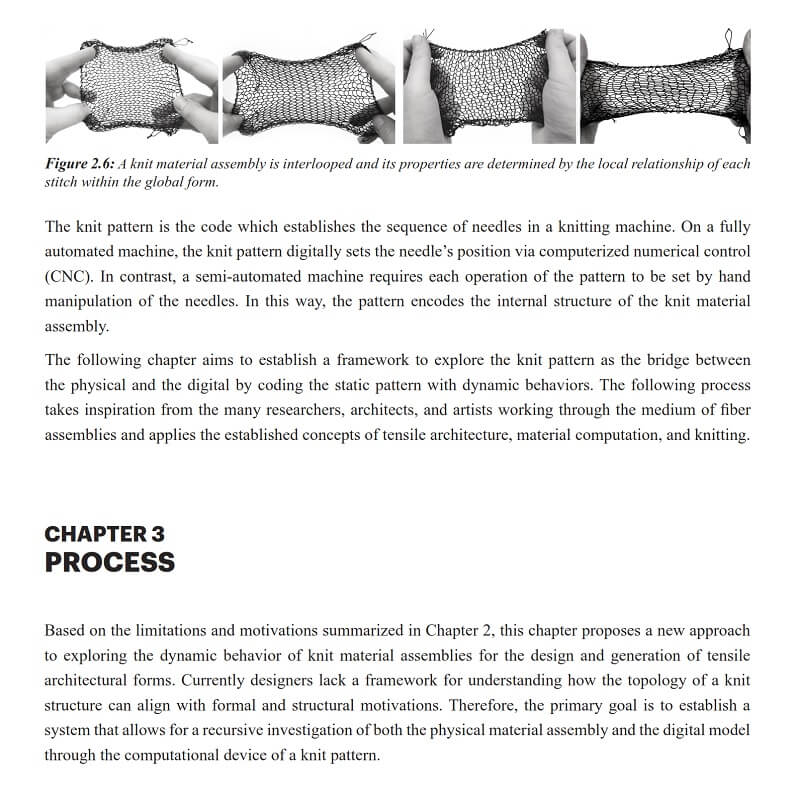 Whereas traditionally the pattern is a static visual representation, in this research it is both the physical sequence of stitches and the dynamic properties of each stitch within a digital model. The dynamic properties of the physical material communicate through the knit pattern to the digital model, which explores the possibilities of form within the constraints of the material to remap the pattern’s code and thereby re-informing the physical.
Whereas traditionally the pattern is a static visual representation, in this research it is both the physical sequence of stitches and the dynamic properties of each stitch within a digital model. The dynamic properties of the physical material communicate through the knit pattern to the digital model, which explores the possibilities of form within the constraints of the material to remap the pattern’s code and thereby re-informing the physical.
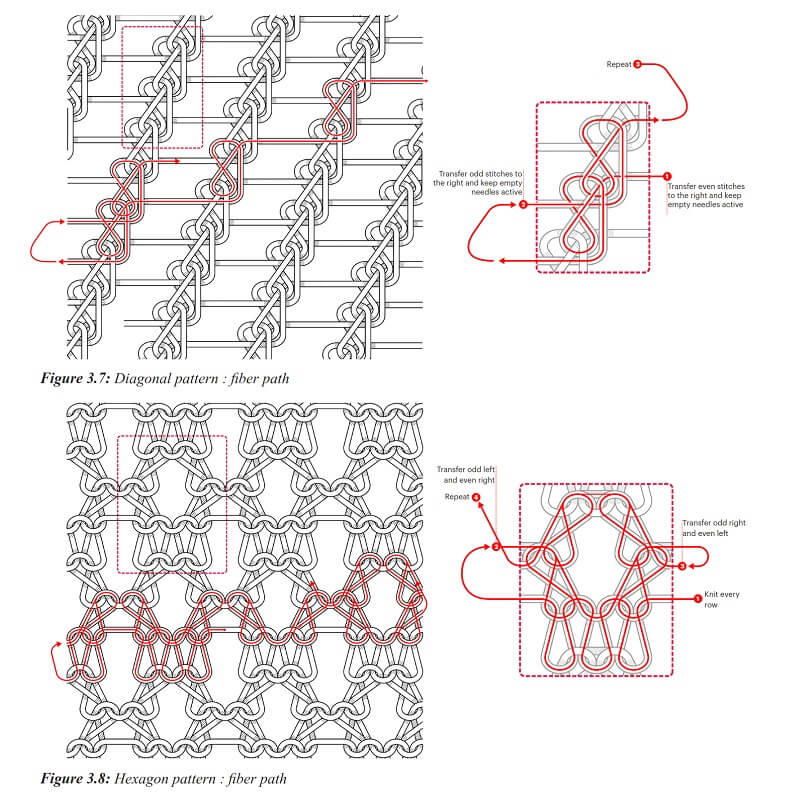 This new framework may help designers create and evaluate material assemblies to better satisfy the local and global needs of form, structure, and aesthetics. The play between the physical and the digital is recursive, experimental, and interpretative – each informs the other while never truly resulting in the same output.
This new framework may help designers create and evaluate material assemblies to better satisfy the local and global needs of form, structure, and aesthetics. The play between the physical and the digital is recursive, experimental, and interpretative – each informs the other while never truly resulting in the same output.
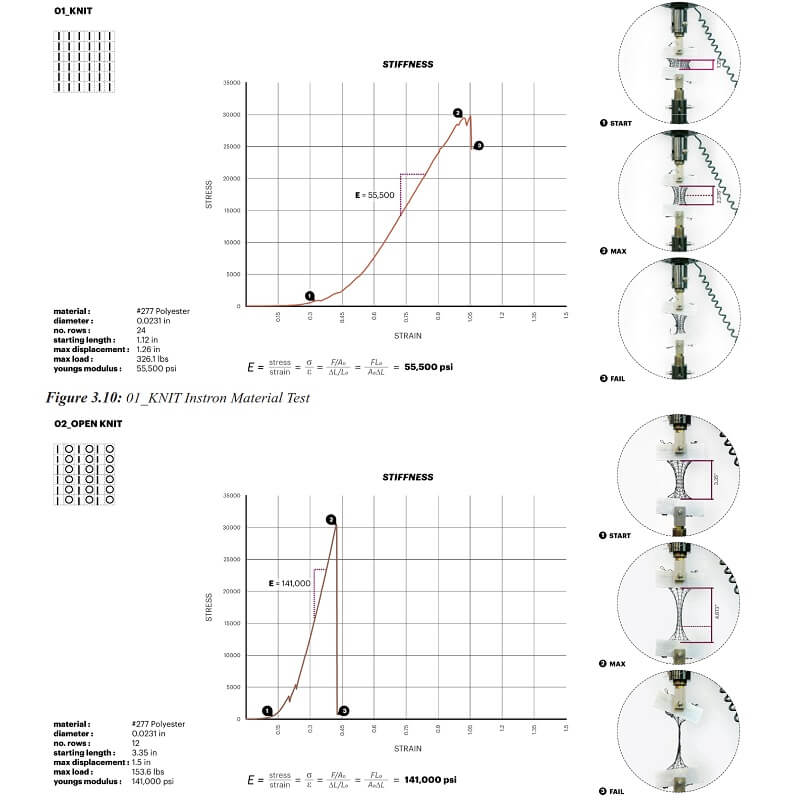
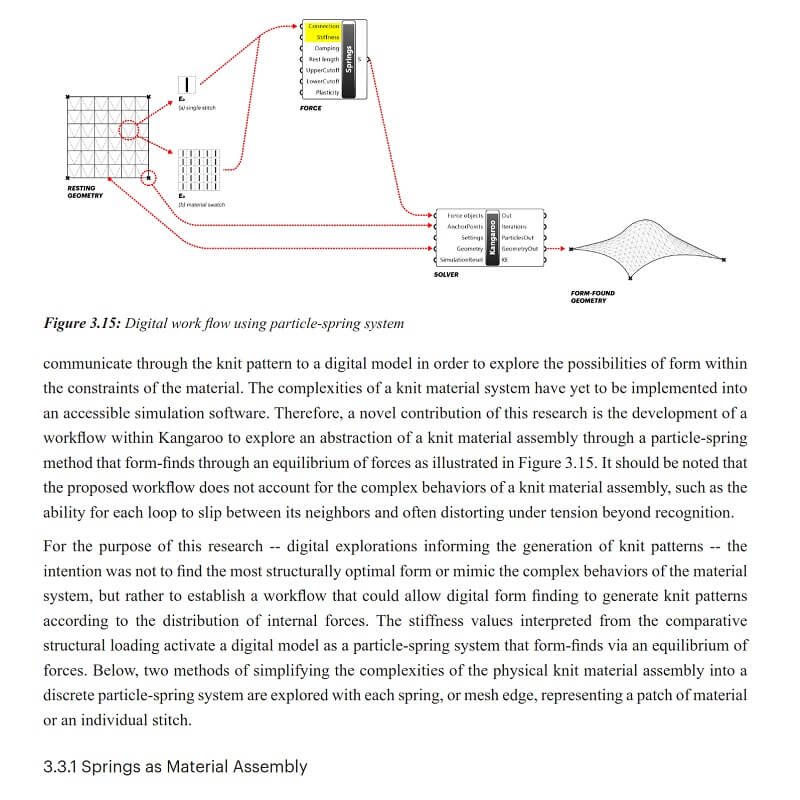
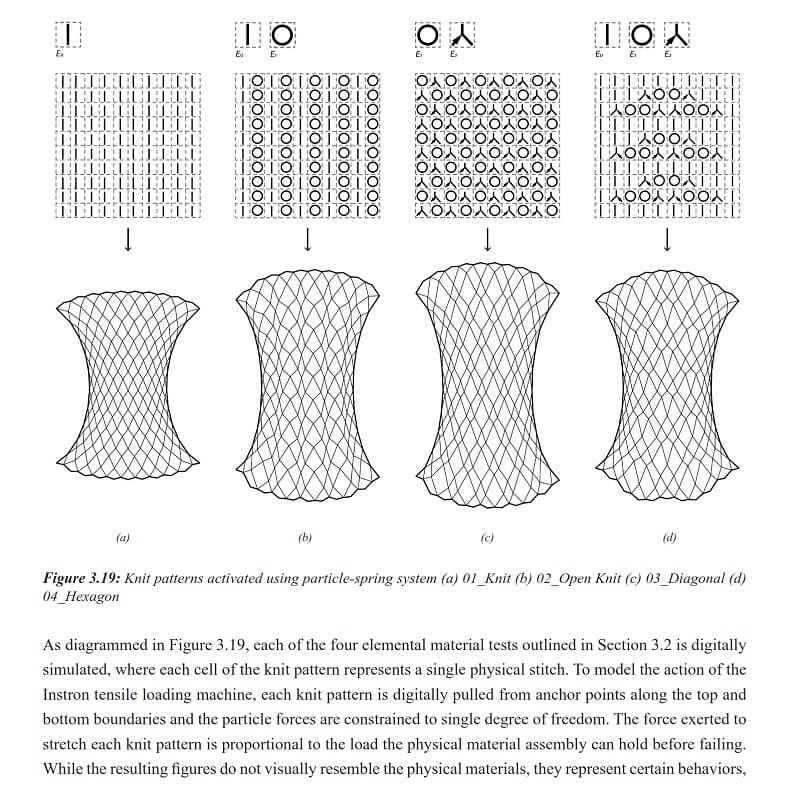
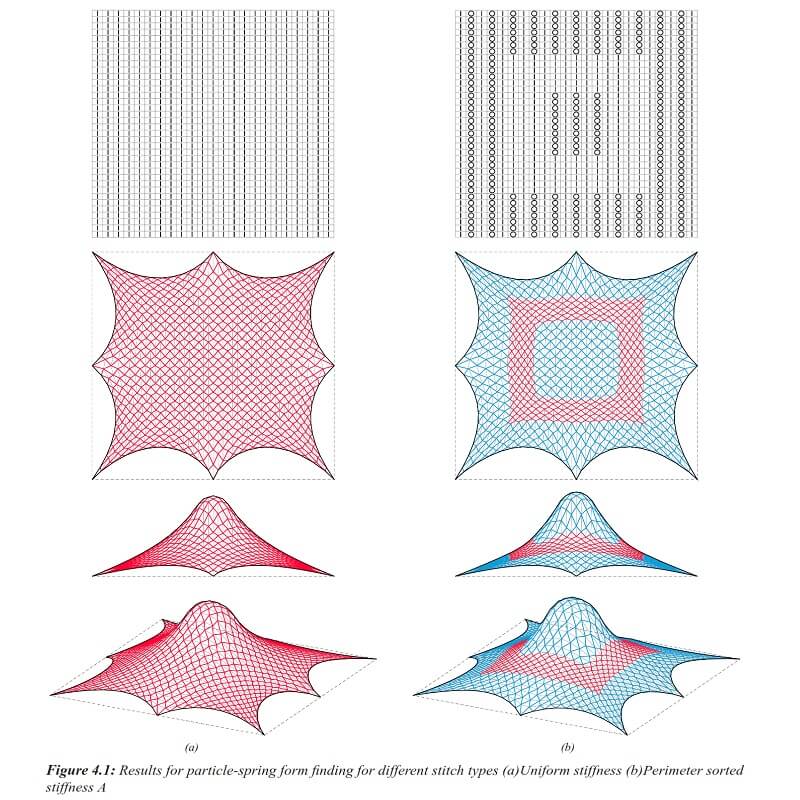
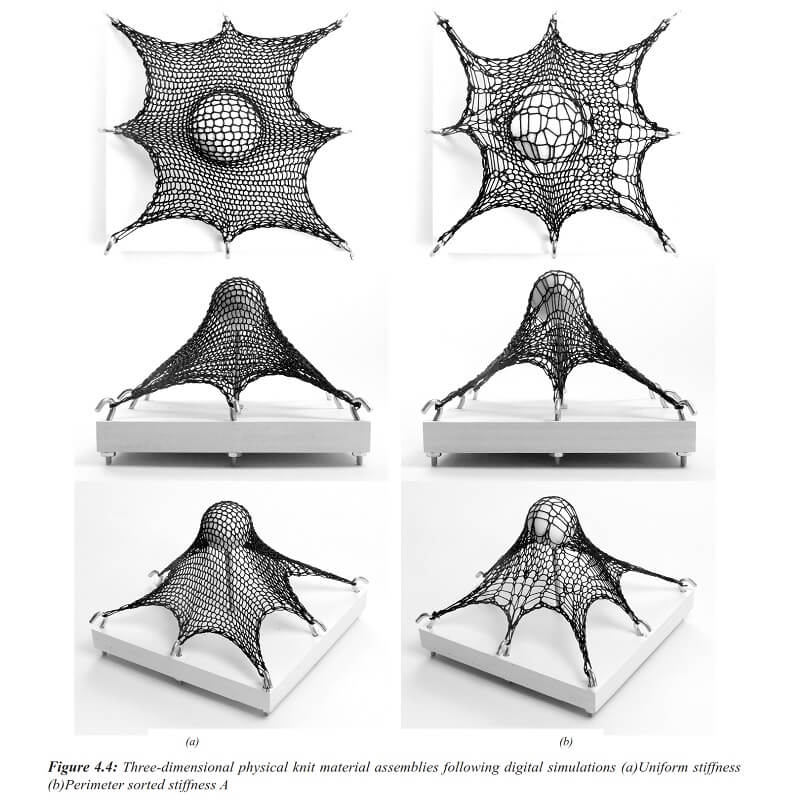





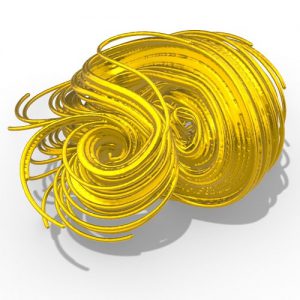
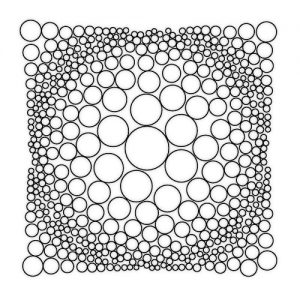





















Comments